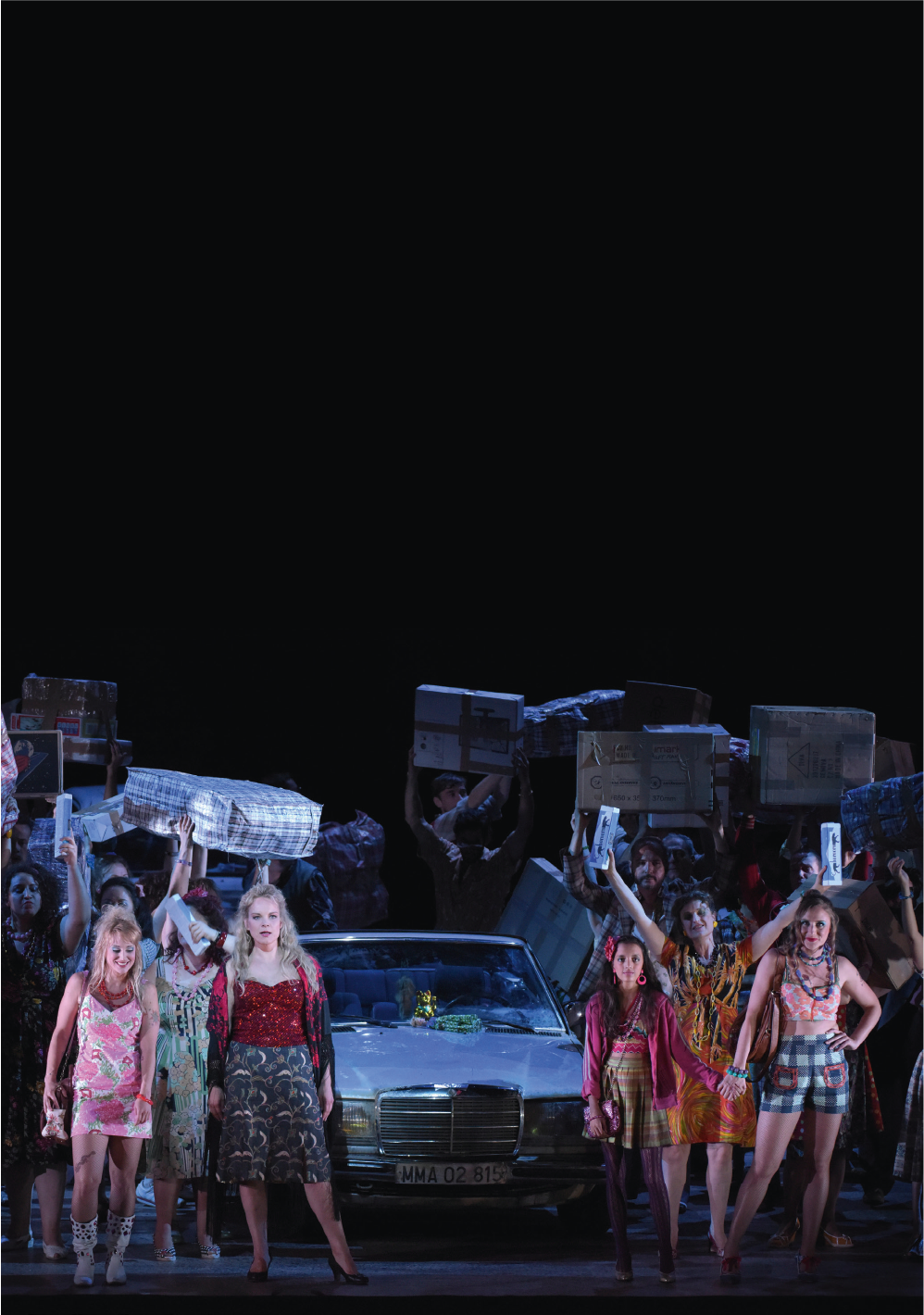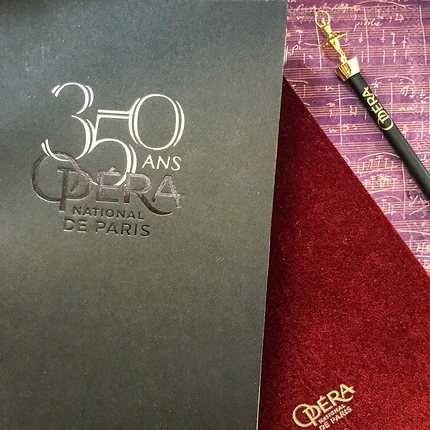Who was Louis Fuzelier (1674-1752), the librettist of Les Indes galantes ? Doubtless one of the most versatile actors of the parisian theatrical life of the first half of the 18th century and one of its most prolific and singular authors. A craftsman who was cosmopolitan in outlook, he left behind a legacy of over 230 plays, all written for the Parisian theatres of the period, from the Théâtre de la Foire (Parisian fairground theatre) to the Comédie Française and the Académie royale de musique.
Louis Fuzelier made a successful debut at the Fair in 1701 with a play for marionettes entitled Thésée ou la Défaite des Amazones. Considering himself, quite rightly, as “the godfather of the Opéra-Comique”, he was the only writer of his generation to have worked for all the Parisian theatres: the Fairground Theatres, the Marionettes, the Comédie Italienne, the Comédie Française and the Opéra. Whilst he was the author of over 200 plays written alone or in collaboration – many of which remain in manuscript form – this polygraph was also a journalist and co-director of the Mercure de France , a theoretician, stage manager, theatre entrepreneur, director of the Opéra-Comique, poet, fabulist, polemicist, a composer of songs and cantatas, a spearhead exponent of parody – in short, a protean figure.
After the failure of his musical tragedy Arion , composed by Matho (1714), he turned to the genre currently in vogue, ballet, of which he became the principal reformer. Ballet after ballet, he attempted tirelessly to renew its aesthetic. In the preface to the Ballet des Âges composed by Campra (1718), he defended the importance of comedy on the stage of the Academie Royale de musique. With Les Fêtes grecques et romaines by Colin de Blamont (1723), he presented a “ballet of a completely new type”, with no divinities, no miraculous enchantments. In the preface to the libretto, he defended the right of opera to draw on History and gave legitimate standing to the historical ballet, in the tradition of “Scarlatti and the Buononcini who made those heroes sing whom Corneille and Racine would have had speak”. In the preface to Les Indes galantes (1735), he once again rejected “the intervention of magic” and gave “physical reasons” for the volcanic eruption in the Entrée of the Incas of Peru, quoting the example of “Popocatepetl, which is the equal of Vesuvius in Naples”:
“The volcano that serves as the focus of this American Entrée is not as fabulous an invention as the operations of magic [...]. Plenty of esteemed travellers have attested to having encountered these subterranean furnaces, composed of bitumen and sulphur, which ignite easily and produce terrible fires when a single piece of rock is rolled into their formidable abysses. The most skilful naturalists support the travellers’ testimony with physical reasoning and by experiments even more convincing that their arguments. Shall I be condemned when I introduce to the theatre a phenomenon more realistic than a magic spell? And just as apt to give rise to dramatic symphonies?”
Partition originale des « Indes galantes », 1735. © BmO / BnF
The parodists were prompt to echo this in demystifying the theatrical “device”:
PHANI
Air: When they say that I love
CRISPINOS
Shall I explain it to you? Turlurette
But the most original feature of his output is doubtless his taste for self-derision. This manifests itself in his self-parodies: his Fêtes grecques et romaine thus become Les Saturnales, then, in their one-act version, Le Débris des Saturnales . In La Rencontre des operas (1723), a “sort of parody” of Fêtes , Clio confides to Chriseis, the slave of Erato, the subject of his next ballet: “It’s the invasion of Spain by the Goths”, to which Chriseis replies that “Nothing could be more gracious than a chorus of Goths accompanied by barrel organs”. Each Entrée of the ballet is then dissected by a Suisse spectator, expert on “trinkink sonks”.
In his short comedy Les Malades du Parnasse , the character of the Critic is the founder of the hospital to which the invalids come to be cured and at which the surgeon “Sabrepièce”, or “Slashplay”, officiates. The ward for new operas is full to bursting. Stalls is the “learned doctor” who prepares the remedies. Fuzelier provides a critique of a dozen works including Le Nouveau monde by Pellegrin, (the future librettist of Rameau’s Hippolyte et Aricie ), a play first performed at the Comédie-Française, bedridden ever since it was printed, and Persée by Lully and Quinault, revived in November 1722, which “should have expired in the theatre after fifteen days” and which however bore up for “almost three months”. He also makes an apology for his parody, Arlequin Persée , performed in December 1722 by the Italians and which, in the hospital for invalid works, shines by its absence although it was in “great need of purging”.
All these short plays promote their author, either by self-denigration or by advocacy. Should one see in this a form of pride on the part of one who, in the manner of a Cyrano, prefers to flagellate himself rather than let other people do it? Should one interpret it as a simple conjugation of his works in different registers according to their place of performance? Or a taste for self-mockery aggrandized to an art de vivre ? One thing is sure: when we read these plays, we venture into the mysteries of an authorial psychology and strategy that is complex to say the least.
Fuzelier himself gives us one of the keys to his strategy in a text published in the Recueil Clairambault-Maurepas . In a fable written in 1729, he represents himself as an author with the features of “a green and yellow toad” (the colours of madness), a runaway from the Fair, in fact sent to the Opera to mine it from within. This strategy of the mole infiltrating the repertoire of the enemy is staged in an original manner. For once, the Comédie-Française and the Foire, perennial enemies, seem to be allied against a common foe: the Opéra. Fuzelier’s skill consists in revealing the superiority of the Fair over the Comédie-Française in its strategies for ruining the enemy:
The Foire with the Comédie
Plan de la Foire de Saint-Germain. © BnF
The Amours des Déesses by Fuzelier and Quinault was also self-parodied by Fuzelier at the Saint-Laurent Fair under the title L’Enfer galant (The Galant Inferno) in August 1729. In the fable, Fuzelier’s name is written with a capital F followed by three asterisks (F***). “The great Fuzelier” written next to it is crossed out: the author-saboteur advances wearing a mask but points the mask out. Because he worked for all the theatres, Fuzelier can be considered as an emblematic figure of the absence of clear-cut distinctions between types of theatre and as a figure head of parody. A chameleon-like writer, he adapts his discourse according to the range of expectations of each theatre. These texts trace a gallery of self-portraits of Fuzelier that enrich the protean figure of this little-known author. Depicting himself as a toad, as Apollo, as the “Count of Lanlère and marquis of Lanturelu ” by turns, Fuzelier gives himself up to any number of metamorphoses – in the image of his own texts – and stages himself with a sense of self-derision that was unique at the time. But through this kaleidoscope of changing portraits, the image of Fuzelier never ceases to elude us. His penchant for apologues and fables goes hand in hand with the taste he cultivates for coded messages. Perhaps he is also that gluttonous poet, an author as bulimic as he is prolific, from whom Slashplay, the surgeon at the Parnassus hospital takes blood only to find, instead of blood, “whipped cream”; or even the so-called “Flonflon, inspector general of itinerant Music in Paris, and purveyor of modern operas” from the short fairground comedy entitled La Rencontre des operas.
It is certainly no coincidence that it is from his pen that we have the most striking reciprocal exchanges between so-called “classical” and “popular” music: “A doctor must pass from tongue to tongue as men pass from white to black, and certain brunettes from black to white; as lawyers pass from for to against; as doctors send their patents from this world into the next; as music passes from the Pont-Neuf to the Opéra and from the Opéra to the Pont-Neuf... ” Ironically, as history would have it, Fuzelier, despite his legendary corpulence – it was said he had himself carried around in a wheel barrow by a valet whom he called his “baptised horse” – was the principal architect of the circulation of arias and of the porosity between the various Parisian theatres.



















































































































